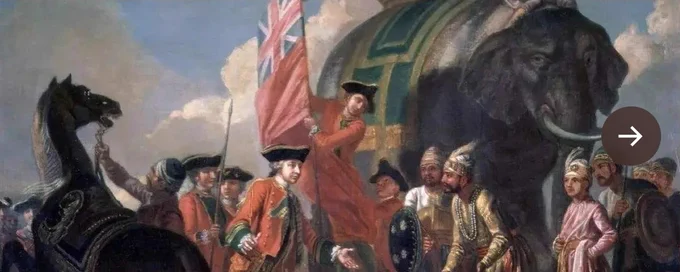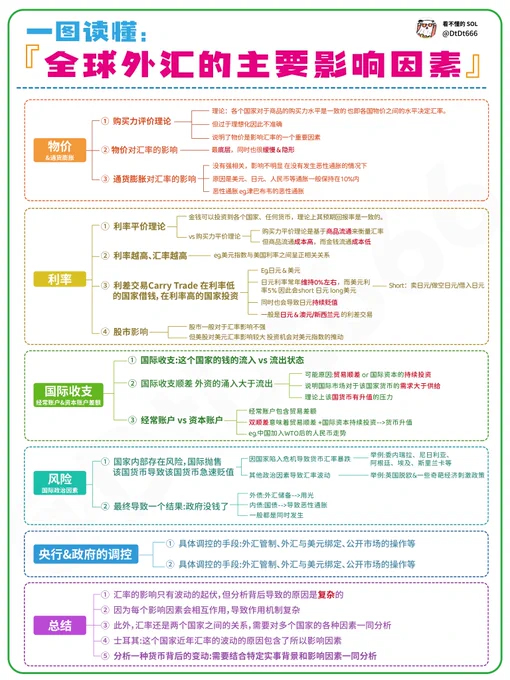Search results for 1971
People
Not Found
Tweets including 1971
这是1971年建设的北京地铁站,公主坟站。去看看54年前有几个崭新的?这也要黑? https://t.co/7w5NriTixm

0
0
1
0
0
Received many messages about readings on #1971# war, the separation of East Pakistan and creation of #Bangladesh#. Here is a quick list for those who asked.
The first essential reading is Hamoodur Rehman Commission of Inquiry into the 1971 War.
https://t.co/OMQR88tIJF
Show more
0
0
10
144
37
#HeroesOfIndia#
Remembering #SamBahadur#, Field Marshal SHFJ Manekshaw, MC, on his 111th birth anniversary. The mastermind behind India’s resounding victory in the 1971 #War# & a true icon of leadership and valour.
His legacy continues to inspire generations.
@adgpi
@prodefencechan1
Show more

0
0
3
145
23
以太坊能否十年超越英伟达!? $ETH
我觉得抛开时间,超越是确定性的,只不过十年可能稍微有些夸张,
我认为十年超越可能会有15-20%的可能性,比如这十年:金融危机 + 链上大爆发 + ETH捕获价值效率大幅提高。
但是20-25年,可能才有更大机会:从美元霸权到多极结算体系、再到链上信用锚——这是一个 需要数十年积累与政策容忍度的过程。
从互联网诞生到 Amazon 成为 trillion-dollar 级别,花了近 25 年;从美元脱离金本位(1971)到美元资产全球定价(1990s)也用了 20 年。
如果 ETH 是“世界货币的候选者”,那它走的不是企业成长曲线,而是文明更替路线。这个过程,需要耐心,也需要命运的选择。
接下来十年可能看到的是——
1)如果DeFi、RWA、稳定币、结算系统等继续扩大,ETH将成为“全球新金融的基建”,全世界更多金融资产、贸易、甚至国家清算系统迁移到链上:其市值会更接近国家/金融体系的权重,而非公司估值模型。
2)ETH 成为链上全球金融的“美元+VISA+国债”的综合体:如果未来10%–20%的全球资产(债券、股票、黄金等)以某种形式“链上化”,以太坊是首选承载网络之一。
3)ETH既有资产属性(Staking收益 + DeFi抵押等),也有主权属性(手续费 + 区块空间作为数字土地),未来极有可能获得“数字国债”般的估值模型。
4)ETH 会逐步趋向通缩,这种设计在长期价值捕获上极具吸引力。
5)如果我们把英伟达视为“AI 硅谷的心脏”,那么以太坊正在试图成为“全球数字金融的底层宪法”。ETH 不再只是投资品,而是成为全球“数字经济的信用基石”
立贴为证,十年以太坊会一一实现!
Show more
0
0
31
78
14
🚨为什么美国总统和美联储主席总是因为降息问题水火不容?
特朗普自从上任后,基本上就是想把鲍威尔摁在地上摩擦,诉求只有一个——
美联储应该大规模降息,从现在4.25%左右降到1%。
但是鲍老爷子也不是一般人,高压之下云淡风轻,既不辞职也不降息。
其实看历任总统和美联储主席,都对“降息”这个议题有明显分歧。可以先回顾一段美联储的黑历史——
上世纪70年代初,时任美国总统尼克松非常焦虑,彼时美国经济深陷滞胀泥潭,失业率高达6.1%,通胀突破5.8%。
正常情况下,这个成绩要想连任基本上难于登天。复杂方案变数太大,时间等不起,所以只能下一剂猛药——逼迫美联储快速降息,制造短期虚假繁荣景象,助力大选。
所以那段时间的尼克松干了跟懂王一样的事情,两人每季度会晤多达17次,次次高强度且赤裸裸地胁迫美联储主席伯恩斯,比如:
喊话“如果我们输了选举,这将是华盛顿最后一次由保守派执政”;
当众驳斥伯恩斯的技术分析,说他讲的都是废话;
警告伯恩斯无权提名美联储理事人选;
最终,伯恩斯选择妥协,1971年美联储将利率从5%骤降至3.5%,M1货币供应量增速飙至二战后的峰值8.4%,尼克松如愿以偿成功连任,并于1972年成为首位访华的在任美国总统。
但伯恩斯被钉上了耻辱柱——
在短暂繁荣后,叠加石油危机,美国国内通胀迎来大爆发,美元指数暴跌,黄金价格暴涨,美国经济崩盘。为此伯恩斯背负了一辈子的骂名,其名字成为“央行失去独立性”的代名词。
后人这样评价伯恩斯:他活下来了,但是名声毁了;他保住了职位,却输掉了历史。
所以你可以看到《大美丽法案》通过之后,特朗普政府又要扩张几万亿美元债务,又加上明年有中期选举,懂王才如此着急地想要降息。
但鲍威尔就是王八吃秤砣铁了心,打死不当第二个伯恩斯。
老子退了,你爱怎么搞怎么搞;但老子还在位,至少要保证不遗臭万年!
距离任期结束还有10个月,现在懂王开始换策略了,把矛头指向鲍威尔个人了,感觉面对一个无赖的懂王,老爷子妥协可能是迟早的事情!
图From:金十
Show more

0
0
9
12
1
I don't know why @rickawsb wrote his article in Chinese but here's an unfiltered English version of it:🧵👇
The “GENIUS Act” and the New East India Company: How USD Stablecoins May Challenge Fiat Systems and Nation-States
By: Rick AWSB
“This is an extremely sophisticated asymmetric strategy. The U.S. is exploiting its adversaries’ weakest point fear of losing control to build its own moat.
I. Ghosts of History: The Digital Return of the East India Company
History doesn’t repeat, but it does rhyme.
When Trump happily signed the GENIUS Act into law, what came to mind was a powerful image from history: the East India Companies of the 17th and 18th centuries commercial behemoths granted sovereign powers by their nations. These were not mere merchants, but corporate sovereigns, blending soldiers, diplomats, and colonizers.
This Act, though appearing like a regulatory tweak, in truth marks the chartering of 21st-century “New East India Companies” stablecoin issuers gaining legitimacy through U.S. law. It's the beginning of a transformation in global power dynamics.
1a. Charters of a New Power
Four centuries ago, the Dutch and British East India Companies (VOC and EIC) had the power to hire armies, mint currency, make treaties, and wage wars. Their state-backed monopolies defined the age of globalized sea trade.
Today, the GENIUS Act essentially charters modern-day equivalents stablecoin giants like Circle (USDC), potentially Tether, and possibly tech giants like Apple, Google, Meta, and X. No longer rebellious crypto startups, they are now pillars of U.S. financial strategy. Their “routes” aren’t sea lanes, but 24/7 borderless financial rails the new arteries of global commerce.
1b. From Trade Routes to Financial Rails
The old companies controlled physical routes with cannons and forts. These new “digital East India Companies” will control global value flows. If a U.S.-regulated stablecoin becomes the default for cross-border payments, DeFi, and real world asset trading, its issuer gains immense soft power defining compliance, freezing assets, and setting financial norms.
1c. Symbiosis and Conflict with Nation-States
Like their historical predecessors, today’s stablecoin giants may evolve from tools of national strategy to independent power centers. Initially supporting U.S. hegemony and countering China’s e-CNY, they may eventually act in ways that contradict U.S. foreign policy, especially as their shareholder interests diverge from state agendas.
The U.S. may face tension between control and dependence, possibly leading to future updates to the stablecoin legal framework.
II. Global Monetary Tsunami: Dollarization, Deflation, and the End of Non-Dollar Central Banks
The GENIUS Act is more than a charter. It’s the start of a monetary tsunami. The collapse of the Bretton Woods system in 1971 laid the groundwork. In the coming era, people in fragile economies may prefer stablecoins over failing national currencies, leading to hyper-dollarization and devastating local deflation.
2a. The Ghost of Bretton Woods
Under Bretton Woods, the dollar was tied to gold and all other currencies to the dollar. This created a paradox (Triffin Dilemma): to support global trade, the U.S. had to run deficits which eventually undermined confidence. Nixon severed the gold link in 1971, ending the system.
The dollar was reborn as a fiat instrument backed by U.S. strength and network effects. Now, U.S.-approved stablecoins elevate this to a new level bypassing national banks and reaching every smartphone directly.
2b. Hyper-Dollarization
In places like Argentina and Turkey, people flee inflation by using dollars. Stablecoins remove friction: no banks, no capital controls, no physical risk.
From Vietnam to Dubai, and Yiwu to Hong Kong, stablecoin usage is exploding. When inflation rises even slightly, capital doesn’t “flow out”. it vanishes instantly into the crypto ether. This threatens national currencies with obsolescence.
2c. Deflation and the Disappearance of State Power
Once hyper-dollarization hits, governments lose:
• Seigniorage (printing money)
• Monetary policy tools
The result: plummeting local currencies, collapsing tax bases, and failed governance.
The GENIUS Act, combined with tokenized real-world assets (RWAs), may accelerate this collapse.
2d. White House vs. The Fed
Domestically, a conflict may brew. If a Treasury-controlled stablecoin system emerges, it could sidestep the Fed, allowing the Executive Branch to exert monetary influence directly especially in election years or sanction enforcement. This may trigger a crisis in faith over Fed independence.
III. The 21st Century Financial Battlefield: U.S. vs. China and the “Free Financial System”
Externally, the Act is a strategic maneuver in the U.S.-China rivalry an ideological and infrastructural clash.
3a. A New Financial Iron Curtain
Like the post-WWII Bretton Woods institutions (IMF, World Bank), this new “free finance” network powered by USD stablecoins is open, efficient, and diametrically opposed to China’s model of state-controlled finance.
3b. Permissionless vs. Permissioned
China’s e-CNY is fully controlled, running on private ledgers, with full traceability. The U.S., in contrast, backs permissionless blockchains (Ethereum, Solana). Developers worldwide can build freely, with the U.S. acting as “credibility anchor” for the USD.
This asymmetric strategy attracts innovators and users, while China’s surveillance model alienates them. It’s a contest China structurally can’t win.
3c. Bypassing SWIFT: A Dimensional Attack
China and Russia attempt to sidestep SWIFT. But stablecoins render that effort obsolete no middlemen needed, no banks required. The U.S. isn't defending old infrastructure; it's creating a parallel game with new rules enforced by code, not treaties.
3d. Winning the Network Effects War
The fusion of the dollar with crypto’s innovation creates an exponential network. Developers and users will flock to where liquidity and freedom are highest.
Compared to the closed, RMB-centric e-CNY, the open USD ecosystem will dominate globally beyond China’s limited spheres of influence.
IV. The De-Nationalization of Everything: RWA, DeFi, and the Collapse of State Control
Stablecoins are the Trojan Horse. Once users hold stablecoins, the next step is tokenizing all assets, stocks, bonds, real estate, IP into on-chain digital instruments, detaching them from national jurisdiction.
4a. Stablecoins as the Trojan Horse
Governments welcome regulated stablecoins as safe crypto. But in doing so, they unintentionally onboard users into crypto ecosystems one tap away from Bitcoin, ETH, DeFi, and privacy coins.
Platforms like Coinbase become one-stop crypto supermarkets. USDC is the gateway drug leading users toward more freedom, higher yield, and greater autonomy.
4b. RWA: Assets Escape National Jurisdiction
Imagine:
• A Chinese team tokenizes app ownership
• Traded on a permissionless DeFi protocol
• An Argentinian buys it with stablecoins
No bank, no SWIFT, no borders.
This isn’t just new payment rails it’s a parallel universe outside the Westphalian order. When capital de-nationalizes, so do capitalists.
4c. The End of Traditional Finance
Banks, brokers, and payment systems exist to mediate trust. Blockchain replaces this with public, tamper-proof records and smart contracts.
Functions replaced:
• Lending → DeFi protocols
•Trading → AMMs
• Payments → Stablecoin transfers
• Securitization → RWA tokenization
V. The Rise of Sovereign Individuals & The Twilight of the Nation-State
When capital flows freely, assets ignore borders, and power shifts to networks and private giants, we enter a post-national age where the individual becomes sovereign.
5a. The Prophecy of The Sovereign Individual
In 1997, Davidson and Rees-Mogg predicted that the Information Age would make power more mobile than ever. The state would be unable to tax knowledge and capital that exists online.
Stablecoins, DeFi, and RWA make this real. A person can now:
• Hold global assets
•Move capital instantly
• Stay outside any one jurisdiction
States lose grip. And their ability to tax or control fades.
5b. The End of the Westphalian System
Since 1648, the world has been ruled by nation-states. But if productive individuals live in cyberspace, state borders become meaningless.
States may resort to coercion predatory taxes, surveillance accelerating elite exit. Eventually, they may become "nanny states" serving only immobile, less wealthy citizens.
5c. The Final Frontier: Privacy vs. Taxation
Today’s chains are transparent. But zero-knowledge tech (ZKPs) will bring complete anonymity.
Combined with stablecoins, this creates an untouchable financial black box breaking the state’s final tool: taxation.
Conclusion:
The French Revolution replaced monarchs with nations. This revolution led by stablecoins and AI replaces territorial sovereignty with network and individual sovereignty.
It’s not just a transfer of power it’s a decentralization and de-nationalization of power.
We are witnessing the breakdown of an old world and the birth of a new order that grants individuals unprecedented freedom, but also unleashes unprecedented chaos.
Show more

0
0
26
37
14
今天和一个老哥喝酒,他说他现在贼担心他的资产。
我笑了:“🐮都回来了,你慌啥?” 他说他有预感,和美元挂钩的资产,像美元债券、美国国债,甚至那些锚定美元的稳定币,都不好了。
老哥说,如果美元开始走下坡路,这些资产就得跟着受苦——债券跌、稳定币承压,整个组合都可能凉凉。
我盘了盘历史上三场关税风暴,感觉这剧情真是神tm的一模一样…
每次关税加码后,都会发生一连串类似的事情——
全是套路,而且永远不变…
1. 关税加码 —— 各国互相加税,全球市场开始乱作一团;
2. 估值血祭 —— 股市、债市等风险资产纷纷被抛售,估值大幅缩水;
3. 通胀抬头 —— 生产成本激增,消费者价格也跟着飞涨,通货膨胀如影随形;
4. 资金抱团硬资产 —— 市场的资金开始从纸面估值资产中撤出,转向硬资产,像黄金、比特币这样稀缺又不容易被操控的东西。
➡️ 1930年斯穆特-霍利法案:
2 万种商品平均加税 20%,结果把全球经济弄得一地鸡毛。股市暴跌,黄金被抱团抢购。关税→报复→贸易冻结→资产溃败的原型,黄金成了资本的“最后一根救命稻草”;
➡️ 1971年尼克松冲击:
美国临时关闭金本位并且加了10% 进口附加税 ,美元贬值近 30%,全球通胀爆发。投资者争先恐后去买黄金,那时候黄金直接“飞天”,完全压倒了美元的避险地位;
➡️ 2018年中美贸易战:
特朗普的关税加码,最高 25% 报复税,全球股市蹦得不行,人民币急速贬值。然后捏,比特币首次被机构列入“战术避险篮子”…
所以tell me,今天这种不确定性极强的环境下,还能拿着啥?
Show more


0
0
16
25
4
一文一图吃透汇率波动的底层逻辑?
有兄弟问,经常买U换U价格有波动,
那是谁决定什么美元对人民币的汇率?
其实影响汇率的五个因素:
通货膨胀、利率、国际收支、风险、央行调控。
🔺01.影响汇率的第一个因素:物价(或通货膨胀)
——理论支撑:购买力平价理论,侧重通过商品的流通,来调节汇率。但商品流通成本太高,调节能力有限。
通胀越高的国家,货币越来越不值钱。比如印度卢比、印尼盾、南非兰特、伊朗里亚尔,过去50年,兑美元一路下滑。津巴布韦、土耳其里拉、阿根廷比索更是经历了严重通胀。
当政府没钱了,他会怎么办呢?
方法一发外债,结果是外汇储备用光。
方法二发内债,内债不是债,但会导致通货膨胀。大部分情况下,这两者是同时发生的。
🔺02.影响汇率的第二个因素:利率(利率越高,汇率越高)
——理论支撑:利率平价理论(钱从利率低的国家,流向利率高的国家)
前两年,大家耳根子都听烂了:“美元加息,导致全球资本回流美国,美元指数强劲”。
大部分情况下,美元汇率,都是和美元利率呈现正相关关系的。利率对汇率的影响,短期内会盖过通胀的影响。
利率对汇率的影响更直接,加息的影响在短期内,会盖过通胀的影响。
拿日元举例,日元的利率维护是0附近,而美元的利率超过5%,自然就会有大量的人去借日元,然后换成美元,日元就会贬值。日本政府不得不下场干预,玩家离场,形成踩踏事件,才止跌。
在美元加息前,贷日元,买的其实不是美元,而是澳元和新西兰元。2008年前,日本兑澳元持续走低,那么2008年为什么日本兑澳元又涨回来呢,原因是利差交易的资本跑路了。
2011年日本大地震引发海啸,核电站泄漏,这本来可能属于日本几十年一遇的大灾难,但是你知道金融市场是怎么反映的吗?日本立刻开始暴涨。利差交易的资本方,进入避险模式,赶紧把澳元再换回日元。这就是为什么我们总说,日元看上去更像避险资产,一出事它就涨。
澳大利亚有超过60%的国债,都是外国人持有的。2011年更夸张,一度超过80%。
🔺03.影响汇率的第三个因素:国际收支(外资流入>流出,说明外汇市场上,本币需求>供给,本币就有升值的压力)
这里需要对比几个概念:贸易顺差&经常账户顺差&国际收支顺差。国际收支包括经常账户和资本账户。经常账户又包括了贸易差额。
美国是很典型的经常账户逆差,资本账户顺差,二者处在一个比较均衡的状态。
比较典型的非均衡状态的案例,就是人民币了。中国刚加入WTO的很长一段时间,一直处在一个双顺差的状态,经常账户和资本账户同时顺差。对汇率的影响就可想而知了。双顺差、汇率升值、外汇储备激增,这三个不是巧合,而是相互之间有关联。
🔺04.影响汇率的第四个因素:风险。
比如委内瑞拉,全球石油储备最多的国家,可是因为内部各种政治原因,美国还对他制裁,持续二十年严重的经济危机。据2021年统计,委内瑞拉有94.5%的人生活在贫困线以下,有76.6%的人处于极度贫困,谋杀率世界第一。
再拿非洲最大的三个经济体举例:埃及、尼日利亚、南非。
尼日利亚,2亿多人口的大国,也难幺蛾子。2022年宣布,说要重新设计大面额纸币,两个月后,原来旧的钱,就全部作废了。大家一下子就慌了,活也不干了,排队去银行换新钱。导致尼日利亚奈拉持续崩盘。也加速了国内通胀。
印度在2016年的时候,也干过类似的事,这么做的原因主要是为了遏制黑市和反腐败。但是他短期内,对经济的打击实在是太大了。
只要有风险,资本就会撤离,外汇就会相应地下跌。最典型的例子,比如英镑。
2016年,英镑为什么大跌,就是英国脱欧公投,意味着风险和不确定性,英镑暴跌。
后来市场一看,梅姨信誓旦旦地说,谈个好deal,这个风险感觉又慢慢消除了,英镑就涨回来一点。
结果好不容易谈了个好的deal,在英国议会没通过,市场感觉完了,又变成个烂摊子,又是巨大的风险,英镑又开始跌。
2022年,英国史上任期最短的首相特拉斯,推出个非常反常理的刺激政策,又是巨大的风险,英国当时债市大跌,利率飙升。按理说,利率上升,英镑也应该涨啊,但则这个时候风险的因素,盖过了利率,英国也跟着暴跌。还顺便带走了特拉斯的工作。
🔺5.影响汇率的第五个因素:央行调控(外汇管制,外汇和美元绑定,或者一些公开市场的操作)
但央行的调控只是短期的,长期还是得看影响汇率的基本规律。
比如黎巴嫩,最早也是想和美元绑定,目标1:1500左右,但最终1:86000,央行也拗不过市场的大腿。
了解了以上这些因素后,我们拿美国的案例,融会贯通一下,过去50年美元的波动,它主要是因为什么:
1)风险(布林顿森林体系瓦解)-美元下跌:1971年美国突然宣布,从布林顿森林体系脱钩,结束了全球的金本位时代,之后,谁也不知道全球的货币体系会走向何方,美元到底还是不是世界货币。
2)通胀(美元高通胀)-美元下跌:70年代末,全球第一次石油危机爆发,美国陷入高通胀,同时经济陷入衰退,美元陷入下跌。
3)利息(美元加息)&风险(拉美危机)-美元走强:为了遏制通货膨胀的压力,新上任的美联储主席保罗·沃克,在1980年把利率调高到了最高20%,同时80年代两次石油危机,美国的利率一直处在高位。让美国在经历了短暂的经济阵痛后,迅速摆脱了通货膨胀。当时拉美又陷入了严重的经济危机,资本开始进入避险模式。
4)国际收支-美元下跌。这么强势的美元,美国的贸易受不了了,尤其同时期日本快速崛起,让美国对日本的贸易逆差迅速恶化,于是美国来了一招阴的,他拿着日、德、法、英,在1985年签了著名的《广场协议》,让其他四国一起帮卖美元,于是美元立刻开始掉头下跌。
5)利息(美联储降息)-美元下跌。之后美联储也降息。
6)国际收支(股灾)-美元下跌。1987年,美国还经历了股灾,美元就持续下跌。
7)利息(美联储降息)-美元下跌。90年初,美联储继续降息,美元小幅震荡下跌。
8)1994年底,墨西哥债务危机爆发,全球进入避险模式,而这个时候美国还在加息,按理讲,美元应该升值才对,因为这次的墨西哥危机,其实就是美元资本在乱搞,美国的经济指标不太好,就让全球都降低了对美元的信任,这轮避险,避的就是你美元。当时升值的是日元和德国马克。
9)国际收支+风险,美元上涨。1995年开始,互联网行业大爆发,资本开始涌入美国,同时1997年开始,接连发生亚洲金融危机、俄罗斯金融危机,在投资机会和避险的双重作用下,美元进入八年的上涨周期。
10)国际收支逆差影响>加息的影响,美元下跌。2000年初,随着互联网泡沫的破裂,加上中国加入WTO迅速崛起,同时欧元刚刚强势登场,美国就陷入了严重的经济账户逆差,虽然美联储还在持续加息,但也抑制不住美元的硬跌。
11)利息(美联储降息)+风险(美国信用风险增加)-美元下跌。2007年,次贷危机还没有爆发的时候,美联储降息,同时美国的信用风险增加,美元持续下跌。
12)风险(全球次贷危机)-美元上涨。2008年次贷危机爆发,迅速波及全球,强度超过了所有人的预期,全球都进入避险模式,这次虽然它源自美国,虽然美联储也在大降息,但是在全球恐慌情绪的作用下,美元还是上涨。
13)利率(低利率)-美元平稳。之后一段时间,美联储持续的低利率,加上量化宽松,美元保持在低位震动。
14)利息(加息)-美元上涨。2015年开始,美联储逐渐准备缩表,退出量化宽松,准备开始加息,美元上涨。
15)风险(全球避险)+利息(美联储加息)-美元上涨。2022年受到疫情、俄乌冲突和各国刺激政策的影响,引发全球性的通货膨胀,美联储快速加息到超过5%,同时再加上逆全球化,地缘政治风险的激增,全球进入一个避险模式,美元快速上涨。
为了兄弟们更加容易理解,我特意制作了此图👇👇
Show more

0
0
18
192
38
一个巨鲸过去半小时里在链上将 197.1 枚 WBTC 卖出换成 2044.4 万 USDT,卖出价格 $103,697。
他是在半小时前从 OKX 提出 197.1 枚 WBTC 到链上地址,然后卖出换成 USDT 后重新转回了 OKX。
地址链接🔗👉:https://t.co/7hIyzfw8C1
本文由 #Bitget|#@Bitget_zh 赞助 https://t.co/n6FYo6Wfy0
Show more

0
0
0
2
0







